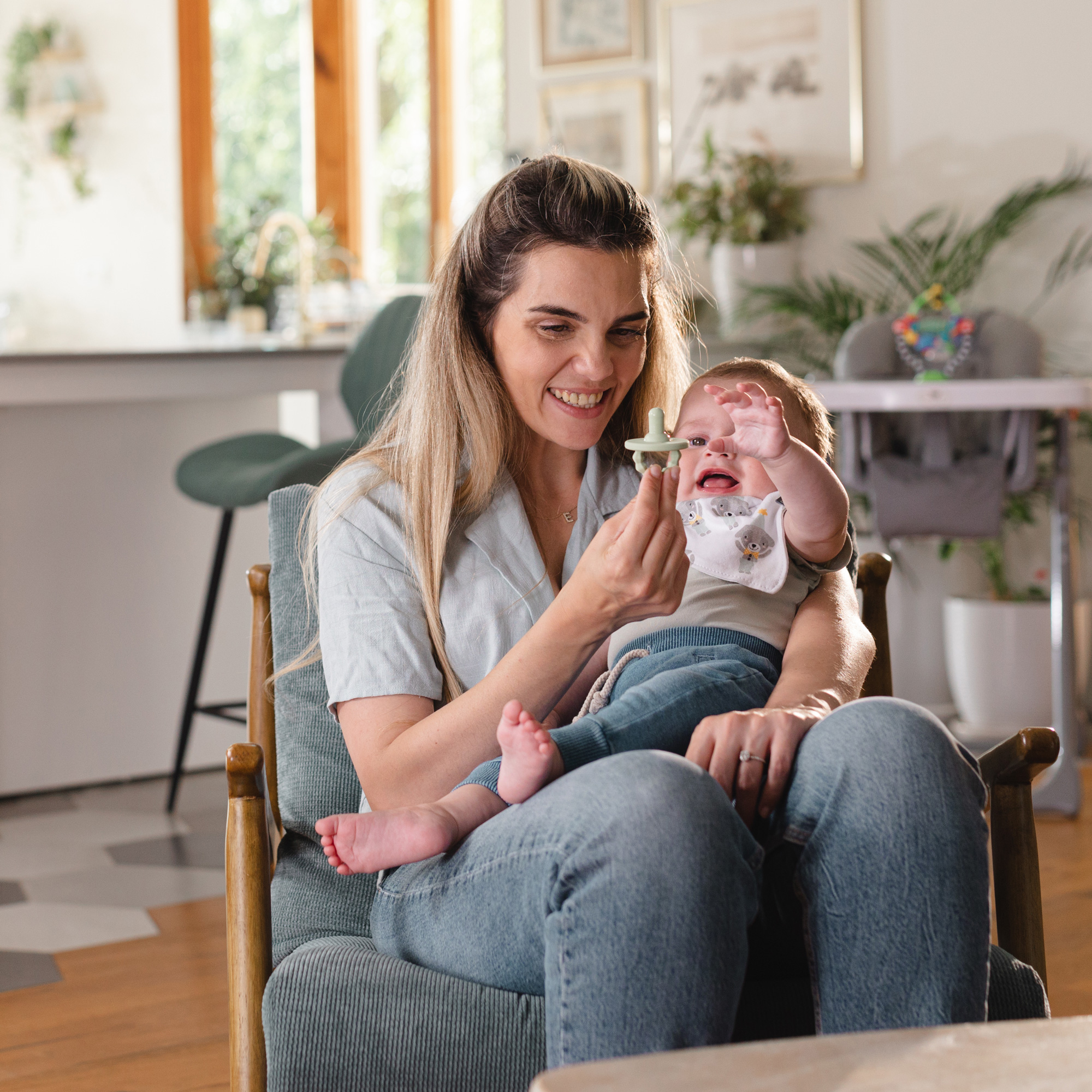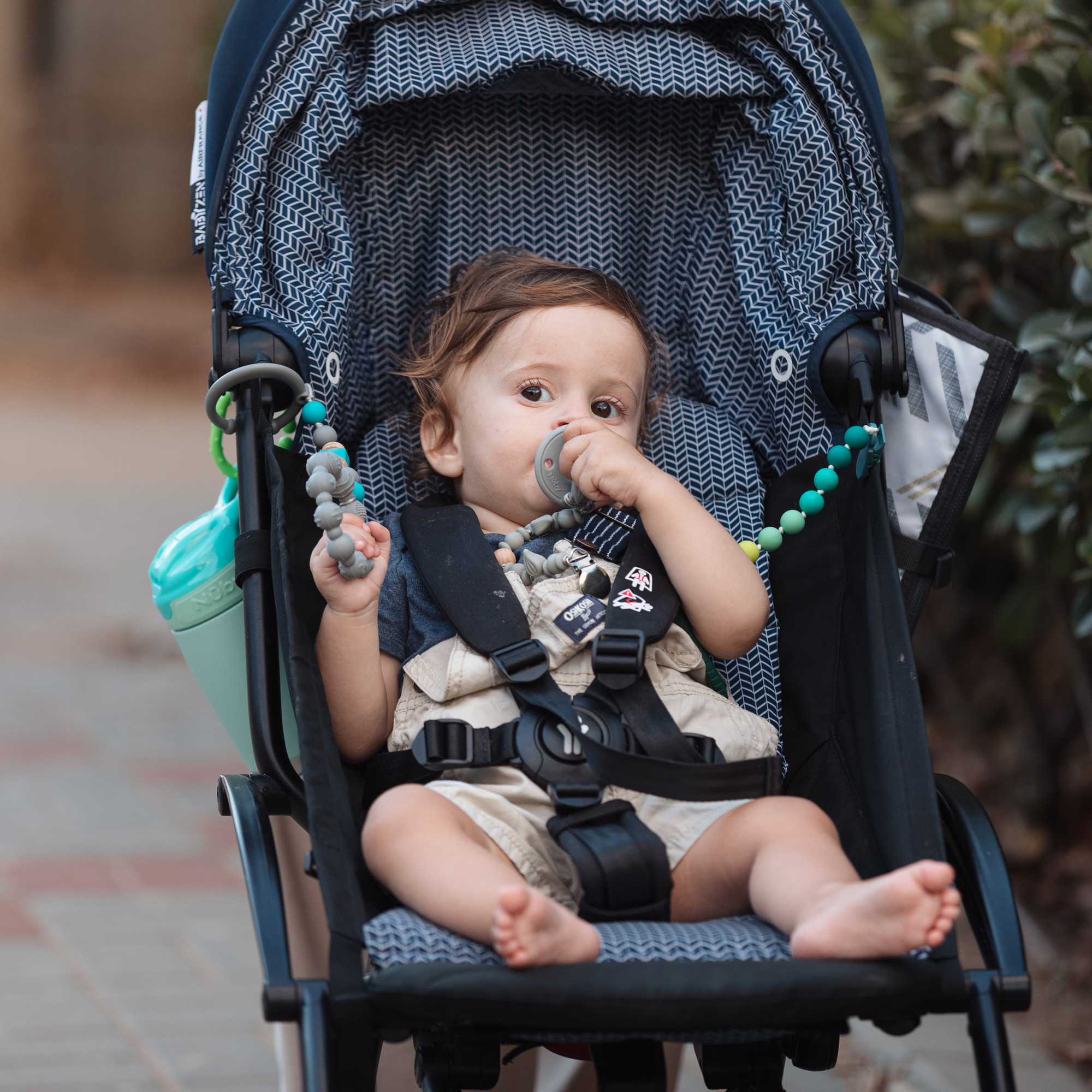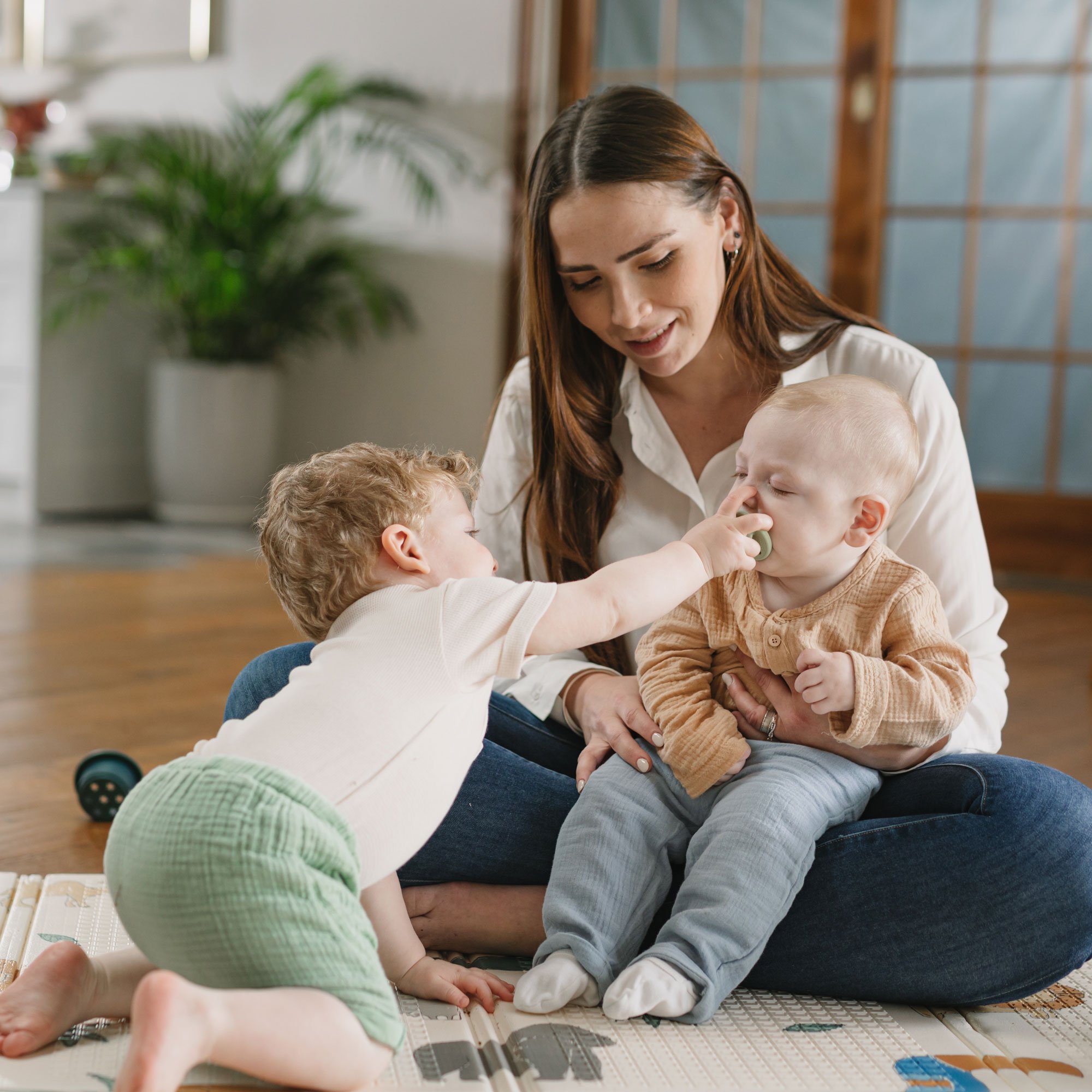How & When to Wean Off Pacifier

Pacifiers are an incredible tool for soothing your baby. They can help to reduce crying, lower their heart rate and blood pressure, and calm them down if they’re being a bit fussier than usual. They’re also a great comfort to your child and may even help them sleep better. But, as your child gets older, pacifiers may become a problem as they grow too attached.
At around 2 or 3 years old, some children will wean themselves off pacifiers, but others may need a bit of extra help. Keep reading to find out how and when to wean your baby off the pacifier.
What Age Should You Wean Your Baby From The Pacifier?
While there’s no set rule to take away a pacifier at a certain age, it’s generally recommended to start weaning your child from the pacifier when they’re around six months old before they form an emotional attachment that will be harder to break later.
While you don’t need to rush to take away the pacifier, it’s perfectly acceptable for children to use them until they are three; just know that prolonged use can lead to delayed speech and language skills, ear infections, or teeth misalignment.
Tips for Weaning Babies From the Pacifier

If you feel the time has come to wean your baby from the pacifier, here are some of our top tips to help with minimal tantrums.
1. Limit Pacifier Use
The easiest way for your child to start getting used to not having the pacifier at all is by limiting its use. This could mean only letting your child have their pacifier at home, only offering it at nap time, or just using it while teething. Over time, you’ll eventually be able to phase it out.
2. Praise and Reward your Child
When your little one chooses not to use the pacifier and instead finds another way to self-soothe, give them plenty of praise. You can even reward them with a fun sticker, extra playtime, or a favorite healthy snack.
3. Use a Transitional Object
Offer your child a transitional object, such as a soft blanket or stuffed animal, in place of a pacifier that will be just as comforting. These security objects can help relieve stress and are a healthier alternative to a pacifier that can be used for longer. Ideally, you should choose something they can safely sleep with, too.
4. Tell Fairy Tales
For older children who better understand when something is gone, it’s really gone, during story time, incorporate their favorite characters saying goodbye to the pacifier and feeling happy about the change. You could also introduce a ‘pacifier fairy’ encouraging your child to leave the pacifier out for the fairy to take in exchange for a gift.
5. Don’t Give the Pacifier to Another Baby
Children can very quickly form a strong attachment to items, especially a pacifier that provides comfort. So, if you’re having another child, it’s best to buy the baby new pacifiers rather than giving them your older child’s pacifiers to avoid any jealousy issues.
6. Choose a Special Day to Say Goodbye
Talk to your child about when to give the pacifier away and arrange a special day to say goodbye. This allows them to mentally prepare for the change. If you put the day on the calendar, surround it with fun stickers, and celebrate the occasion, they’ll likely have an easier time recognizing it as a good change and be more willing to give the pacifier up.
7. Let your Child Lead
It’s unlikely your child will want the pacifier during their whole childhood, so for a more natural approach, let them take the lead and give it up when it feels right. Some children may grow attached to another item, while others may become disinterested and are happy to give it up.
Stay Positive and Consistent
Remember, taking away a pacifier can take time. So, don’t put too much pressure on yourself or your child. You know your child best, and if you feel like they aren’t ready to give it up, don’t force the change or make them feel like they’re letting you down. Simply try again the following week and stay positive and consistent.
What if I Want to Keep the Pacifier?

If you’re happy to let your child continue using the pacifier until they’re older and allow them to grow out of it on their own, we’d recommend teaching them how to find and replace the pacifier during the day. This means they won’t rely on you to always give it to them, and they can start to learn self-soothing techniques. For example, if they drop it in their bed at night, they’ll be able to find it and pop it back in by themselves without crying or needing you to find it for them, giving them some much-needed independence.
At Nuby, we have a wide range of pacifiers suited to every child’s needs and preferences. For example, our popular Silicone Softees pacifiers are designed to soothe and calm and feature a textured handle that doubles as a teether.
We also offer pacifier clips, like our silicone and wood beaded pacifier clip, that can be easily attached to your child’s clothing to prevent them from being dropped while also providing tactile stimulation for your little one.



